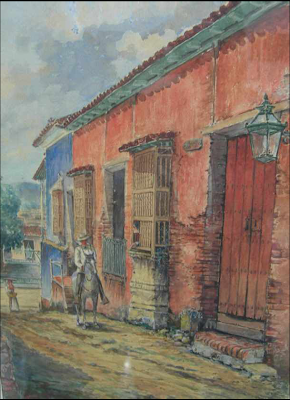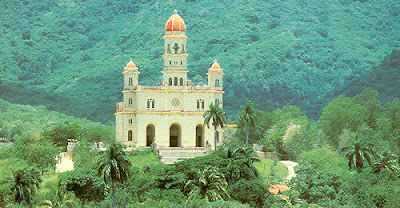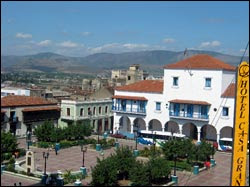On December 27th, 1862, the painter and patriot Jose Cayol Bofill was born in Santiago de Cuba, this beautiful southeastern city of Cuba . He became a prominent promoter of the arts and a jealous guardian of our cultural heritage. From an early age, he revealed his desire and passion for the painting, an artistic expression in which he has Antonio Vallejo as first and principle master. After graduating, he worked in accounting for several years at the Gas Company, while using the money he made for paying his tuition tuition. At 24 years of age, he was inspired with an the idea of founding the Yacht Club of Santiago de Cuba. This institution became a center of conspiracies to influence the second war of independence against the Spanish colonialism, which began in 1895. Jose Bofill was arrested and after a period of solitary confinement, on April 22nd, 1897, was released with a warning to leave the country immediately.
He started a difficult but decisive stage in his life. He passed directly to Haiti, where he drew cards, using a pen, with effigies of Marti and Maceo, which were acquired by emigration. He later traveled to Costa Rica and eventually to New York. In this American city, he taught painting, drawing and designed buildings and monuments, such as the first tomb of Jose Marti and the medallion of the pantheon erected to Federico Capdevila, an advocate for medical students shot by the Spaniards.
 |
José Bofill, Callejón Colonial, acuarela (water color) |
At this stage, in his creative work, he made portraits honoring outstanding figures of the Independence, which were drawn or sold by the delegations of the Cuban Revolutionary Party to swell its funds.
In May 1898, he returned to Santiago de Cuba and is appointed by the Mayor Don Emilio Bacardi Moreau, as director of the museum created by him, and which happened to be the first museum founded in the country. Bofill presided over the section of visual arts of the Athenaeum of the city and promoted many cultural activities, along with prominent personalities from the intelligentsia from Santiago.
In 1912, he joined the National Academy of Arts and Letters, and attended as a delegate to the National Congress of Art in 1930. He was awarded the gold medal of the Cuban Marine Companies, and subsequently was awarded the degree of admiral of the order of nautical merit. He was also a member of the Association of Artists of Oriente. In addition to his artwork and his work as specialist in museums, he delved into the art of modeling. After his retirement, he was appointed Honorary Director of the Emilio Bacardí museum and library Elvira Cape. Jose Bofill Cayol died on October 20th, 1946 and served as the curator of the Emilio Bacardi Museum until his death.
Today, the replica of an alley in Santiago from the colonial era designed by him very deservedly bears his name. This one showcases a side of the museum.
However, we, the people from Santiago de Cuba, owe a great debt to his memory. His extensive work, deserves the appreciation and admiration of the present generation, and an appreciation for his contribution to the visual arts and to the protection of our cultural heritage.













